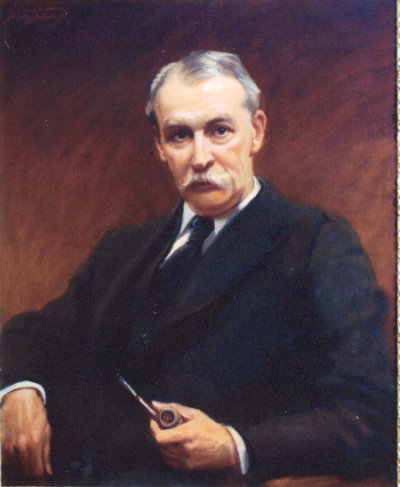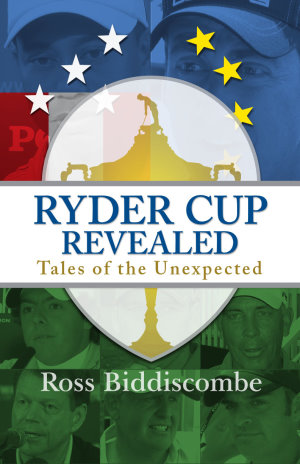Nowadays, there are plenty of bidders for the rights to stage the modern-day, European-based Ryder Cups. Courses are custom made for tens of thousands of spectators like those at Le Golf National this year and Celtic Manor in 2012. Plus, the host venues are spreading around the continent of Europe – first in Spain in 1997, now in France and with Italy in 2022. It was an entirely different story when the Ryder Cup first began.
The early Ryder Cup matches on the British side of the Atlantic were the sole responsibility by the PGA. Samuel Ryder may have bought the trophy, added some cash to the pot at the outset and helped put together the deed of trust that defined the rules of engagement, but it was the Association found it hard to make each contest a success and even find a host club that could generate plenty of cash. There were two reasons for this: the British had few potential clubs to partner with and also there was no culture in Britain at the time to invest in professional sport, certainly not to the same degree as in America’s thriving meritocracy. Making a profit at the “home” match was less of a problem for the PGA than generating funds to send the

team to America every four years.
Funds were an issue
Funds had long been an issue within professional golf. The British PGA was formed in 1901 by 59 full-time pros and 11 assistant pros and its first reported war chest of monies was just over £47. By the late 1920s, the association had around 900 members, but still lacked any real commercial acumen. This was a moment in history when working men from all walks of life grouped themselves together in unions to gain financial and social power. The PGA was essentially the golf pros’ union and taking part in an international team match brought significant prestige, but they still needed the expertise of a respected host club and the business contacts of their senior members to help.
The PGA definitely did not have enough money to send their team to the inaugural match in America in 1927 and had to rely on donations from some of Britain’s 1,750 golf clubs as well as sympathetic groups and individuals from around the world, like the London Stock Exchange Golfing Society who sent £210; a golf club in Nuwara Eliya, Sri Lanka, that contributed £25; and anonymous donors such as “A Boy Golfer” who chipped in two shillings and seven pence. When the total fell short of the necessary £3,000, Ryder and ‘Golf Illustrated’ magazine put in the final £300 or so to enable the team to travel.
Next came first “home” match in 1929 when the challenge was to turn a profit and make an extra £3,000 to send another team to America in 1931. If this plan failed, the PGA could be left bankrupt or the match simply would not take place.
Many fans thought the most obvious option for a venue partner was one steeped in the history of the sport, somewhere in Scotland perhaps, like St Andrews or one of the regular Open Championship venues in Lancashire such as Birkdale. However, staging the Open with all its heritage and tradition was a far cry from an untried and untested team event that was still to fully capture the imagination of the golfing public. The PGA was not in a strong negotiating position, but there could be no question of failure.
Moortown Golf Club Selected
There were few options and the Association’s minutes from December 1927 show that only Moortown Golf Club in Leeds, Yorkshire, and Gleneagles made offers to act as host. The committee selected Moortown for a very simple reason: it believed more spectators would come from the surrounding English towns and cities than travel north to Scotland. “The match should not be played further south than Lancashire or Yorkshire,” said James Braid, five-time Open champion and a commanding voice on the PGA committee. Moortown it was then.
Built on moorland in 1909 and designed by the great Dr Alister MacKenzie, the Moortown course had little history of top-line golf events, but it did boast a large contingent of businessmen members from Leeds and the surrounding area. Moortown was also well known to the players – Braid and Harry Vardon played an exhibition match there as early as 1910 to mark the course’s opening.
However, the man behind the Moortown bid is thought to have been a local bank manager named Kolin Robertson, a well-known member of the Yorkshire club and someone of rare far-sightedness who was also instrumental in organising the well-respected Yorkshire Evening Post professional event at the club every year. Robertson suggested that Moortown’s rough and windy conditions would give the home team a significant advantage while the regular staging of a pro tournament proved the club’s ability to both handle the practicalities of the Ryder Cup and, crucially, the finances of the event. Plus the Post not only agreed to provide plenty of local publicity (the support of the print press was a critical factor for sports events in the 1920s), but also invited the two Ryder Cup teams to play in its pro event the week before as a warm-up that would put extra cash into the players’ pockets.
 And so it came to pass. The American team came over to Yorkshire in April 1929 and Joe Turnesa from New York won the YEP event before the two teams battled for the Ryder Cup in front of a crowd of several thousand fans. The match raised around £1,300 for the PGA’s coffers, an amount that was short of the intended target but still deemed a success. The PGA committee then diverted money from other events over the next two years to its Ryder Cup fund – a strategy that continued for many years.
And so it came to pass. The American team came over to Yorkshire in April 1929 and Joe Turnesa from New York won the YEP event before the two teams battled for the Ryder Cup in front of a crowd of several thousand fans. The match raised around £1,300 for the PGA’s coffers, an amount that was short of the intended target but still deemed a success. The PGA committee then diverted money from other events over the next two years to its Ryder Cup fund – a strategy that continued for many years.
Southport & Ainsdale Golf Club Hosted Twice
At the time of the next British-based in Britain in 1933, the country was in a state of economic despair. With a quarter of the country’s workforce (2.5 million people) unemployed and cash in very short supply, the PGA needed a Ryder Cup partner even more willing than Moortown. Luckily, interest in the Cup was increasing and Southport Town Council showed an interest almost two years in advance.
The burghers of the Lancashire seaside town had been active supporters of professional golf for several years: the likes of American legend Walter Hagen had already played an exhibition in Southport; and the national newspaper, The Sunday Dispatch, had co-sponsored the Southport Professional Golf Tournament in 1930 with £1,500 in prize money, believed to be the highest of any similar event in Britain at the time. Eventually, Southport & Ainsdale Golf Club was chosen as the host club and backed with £400 of up-front money from the council.
The club members set up a committee that made plans for marquees and purchased a new motor tractor to aid course preparations. Crucially, a tight rein was kept on finances and a tidy profit of around £1,800 was banked by the PGA after the match, an amount which the association’s Board minutes state was “highly satisfactory”. In fact, Southport Town Council and Southport & Ainsdale made such a success of the match that it returned there in 1937 when a £2,600 surplus was achieved.
The PGA’s own chairman J.H. Taylor then stated in his post-match speech that he hoped the Ryder Cup contest would return again to the same club in four years’ time in 1941. It was even a thought within the PGA that the club could become the Cup’s permanent home. There was certainly a paucity of suitable alternative courses at that time and to have a regular, vibrant partner prepared to invest time, effort and money into the Ryder Cup would have been a huge relief for the PGA. However, World War II began in September 1939 and destroyed many things in the ensuing six years, including the connection between the Ryder Cup and the Southport & Ainsdale links which had to be downsized and redesigned so new houses could be built for the families of returning soldiers.
Ross Biddiscombe’s acclaimed book Ryder Cup Revealed is available at amazon.co.uk via this hotlink: https://tinyurl.com/y9w75whd

